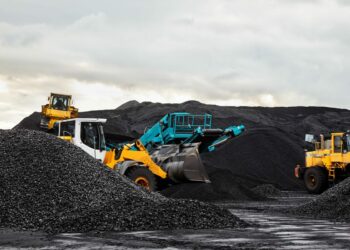Emily Pickrell, UH Energy Scholar
Right now, much of the climate change conversation is focused on reducing future emissions.
While that is critical, it represents only part of the solution. Some industrial processes – steel, cement and aviation – will prove challenging to decarbonize. Having a way to remove this carbon will be part of the solution.
Emerging direct air capture technology is ready to address that challenge. It’s a technology that climate activists, the U.S. government and the energy industry all agree is essential to tackle hard-to-abate distributed emissions.
The technology’s future has just had a huge boost – the Inflation Reduction Act. The legislation includes generous support for direct air capture facilities. And the learning by doing that these facilities will enable will improve the economics of projects into the future.
These incentives complement the 2020 infrastructure legislation, which included $3.5 billion for four regional direct air capture hubs. The purpose of such a hub is to encourage the colocation of complementary infrastructure. To be eligible for government funding, any proposed hub site must demonstrate that it will eventually be capable of capturing at least 1 million metric tons of carbon dioxide annually.
Because of attached funding, many states are making proposals for why their location makes sense, talking up regional economic development needs and other factors to argue their case.
Yet Texas has a much more compelling and unique story: it can make direct air capture economically feasible, with customers willing to pay for the carbon capture, and in doing so, financing the expensive technology.
This is important, because the high cost of direct air capture has been one of the biggest barriers to adoption. Right now, using direct air capture is estimated to cost roughly $500 per ton, according to data provided by the University of Houston. These costs could go down to $300 per ton in the coming years, when the technology becomes more efficient.
Creating hubs where these costs can be controlled and lowered will be essential for broad commercial deployment when the funding for government programs ends.
It will encourage companies to make the huge investments that these kinds of emerging technologies need for further development – which leads to further price decreases.
The good news is that several Texas-based major energy companies are already committing to these kinds of investment in direct air capture.
And they have been doing so for years.
Houston-based Occidental Petroleum
OXY
recently announced it would begin construction of a direct air capture plant in West Texas to remove 1 million tonnes per year of CO2 from the atmosphere, using the captured carbon dioxide for its enhanced oil recovery, or EOR, strategy. For EOR operations, carbon dioxide is a critical input. The carbon dioxide is injected into the ground to help squeeze out oil that would otherwise be difficult to reach.
The resulting oil produced changes the overall economics for these projects, converting the carbon into a valuable commodity, rather than just a waste product to be stored.
Much of this carbon dioxide-based EOR is taking place in the Permian Basin, where there are many depleted reservoirs available to displace oil and store carbon. The industry in the Permian Basin has also demonstrated over the last 50 years that they know how to safely sequester carbon and manage it, without any significant threat to surrounding communities. Given the importance of public confidence about the overall idea of carbon storage, Texas’ track record would be a real asset.
Texas also has favorable storage geology, with onshore storage capacity for between 661 million and 2.4 billion tons of carbon dioxide in its gigantic underground reservoirs. For direct air capture projects in Texas’s Permian Basin, there will be no need for extensive pipeline infrastructure to move the carbon dioxide to storage facilities.
Again, a big cost saver.
Direct air capture facilities are expensive to run – about half the overall cost of the projects come from the energy required to operate them. And given that the aim is the removal of carbon from the atmosphere, carbon-free fuels should be used.
Once more, it’s Texas – this time by a long shot.
The Lone Star State is the largest wind energy producer in the U.S. Wind energy accounted for 25% of its total generation in 2021, making the kinds of power demands of direct air capture seem modest in comparison. And better yet, it could do so without the need for a big infrastructure upgrade to its powerlines – most of the wind generation is already in West Texas.
Under the requirements of the legislation, the projects need to be able to capture and sequester or use at least one million metric tons of carbon dioxide each year. They also need to demonstrate that they could be developed into a regional carbon network for carbon storage.
Several companies in Texas are actively working on direct air capture solutions. Chevron and Occidental have both invested in a joint venture to take carbon directly from the air and subsequently synthesize it into clean transportation fuels. ExxonMobil has spent the last three years working together with Global Thermostat on direct air capture to advance “breakthrough technology and ways to bring it to scale”.
The work these companies are doing also ensures that they will have plenty of human talent and direct experience in place – in addition to the wealth of energy know-how already available in Texas.
When the announcements come, Texas should feature prominently on the list.
The success of emerging technologies like direct air capture actually do hang on whether they can develop further by attracting more investment and becoming economic. Companies should be excited about their ability to make them work and flourish while doing so.
No other state can make a case like Texas about how it is ready to make this happen.
Emily Pickrell is a veteran energy reporter, with more than 12 years of experience covering everything from oil fields to industrial water policy to the latest on Mexican climate change laws. Emily has reported on energy issues from around the U.S., Mexico and the United Kingdom. Prior to journalism, Emily worked as a policy analyst for the U.S. Government Accountability Office and as an auditor for the international aid organization, CARE.
UH Energy is the University of Houston’s hub for energy education, research and technology incubation, working to shape the energy future and forge new business approaches in the energy industry.











